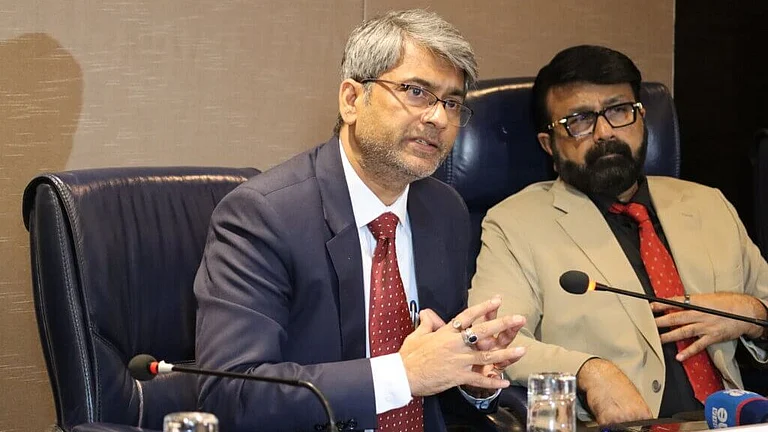Till about a decade ago, India was believed to be the diabetes capital of the world until studies indicated that China had more number of people afflicted with the disease. However, experts believe it is only a matter of time before the country gets back to being number one.
“Diabetes was considered to be a rich man’s disease earlier. Then it started moving to the middle class. Now, it’s going to hit the poor,” says well-known diabetologist V. Mohan, who heads the Madras Diabetes Research Foundation. The well-off, he says, spend a fraction of their income on treatment, but a poor patient spends between 25-30 per cent of his total income attempting to cure the disease. “The real challenge begins now, when diabetes has begun targeting the poor,” he adds.
Still, that is only one of the many challenges in the fight against diabetes. An estimated 6.92 million adults in India have diabetes (109.6 million in China), according to the International Diabetes Federation’s (IDF) 2015 Diabetes Atlas. Worldwide, the study estimated there were 415 million people aged between 20 and 79 with diabetes. It predicted that the figure would reach 642 million by 2040.
“It’s not just the numbers. We have nearly 70 million people with diabetes, and we have to provide treatment to them. But how many professionals are trained to give that treatment?” asks Mohan. There are only 6,000 diabetologists and about 600-800 endocrinologists in India, largely because diabetes was not such a common disease even a couple of decades ago. In fact, the number of people suffering from the disease in India has increased more than three-fold in the past two decades. It was only 19 million in 1995.
Experts say that treatment poses a challenge because diabetes does require specialised treatment for the eye, the heart and kidneys. According to the IDF, the number of deaths among adults in India due to diabetes was around 1.02 million in 2015. Indians have been found to be genetically prone to diabetes mellitis and, with the genetic and environmental factors becoming favourable, there has been an increase in the incidence or prevalence of the disease among the affluent sections, says diabetologist Dr Ajay Ajmani.
Diabetes is a condition where the body cannot control the glucose levels in the blood, either because it cannot produce sufficient insulin or cannot use the insulin effectively. The latter condition, called Type 2 Diabetes, is typically associated with sedentary lifestyles, obesity and high-calorie diets. People with diabetes face a higher risk of developing other complications. According to the IDF report, diabetes is the leading cause of cardiovascular disease, blindness, kidney failure and lower limb amputation in almost all high-income countries.

“The affluent section is becoming aware of diabetes mellitus and its risks and is now hitting the gym to remain physically active,” says Ajmani. “We have to make our school environment healthy with proper food and adequate outdoor sports activity besides creating awareness to halt an epidemic of diabetes.” .
Indeed, the key shift in diabetes incidence is from urban areas to rural and older age groups to young people, even children. “Now, even children aged less-than-10 years are getting diagnosed Type-2 diabetes. Many aged 14-15 suffer from gross obesity, which was unheard of 15-20 years ago. Once they get it at such a young age, it takes only 15 years to develop complications,” says Mohan.
High stress levels too are a major contributing factor. “This is a warning that diabetes is definitely an epidemic, which is moving very fast. It’s not a rare disorder we are talking about or something which we are exaggerating. Not at all.”
Incidentally, studies have also thrown up interesting observations. A few decades ago, Mohan says, it was believed that Indians, when they migrated to the West, were more vulnerable to the disease than those back home because of the affluent lifestyle they adopted. “So, last year, we wanted to check if it was still true and what we found was exactly the opposite. In urban Chennai and urban Delhi, the prevalence rate of diabetes is higher than in Indians in San Francisco because the latter have become more physically active. They have learnt their lessons over the last 30 years but we have not,” he says.
The state-wise data on diabetes is based on the Indian Council for Medical Research - India Diabetes (ICMR-INDIAB) study, which is seen as the largest epidemiological study in the world. The study—an effort to determine the prevalence of Type 2 diabetes mellitus and pre-diabetes in urban and rural areas by estimating the state-wise prevalence—has been completed in 15 states since 2008 and it is likely to cover the remaining states over the next couple of years. Its key findings, experts say, are that diabetes prevalence rates are extremely high—above 20 per cent—in metropolitan areas and around 14-15 per cent in smaller towns. Rural prevalence, which used to be 2-4 per cent, too has been increasing of late. The median rate of incidence of diabetes in India is about 10 per cent of all adults.
“The ICMR-INDIAB study shows that prevalence of diabetes mellitus continues to rise. It also shows that we have a large pool of people with prediabetes who will be future cause of increased number of diabetes unless preventive action is undertaken,” says Ajmani.
Pre-diabetes refers to the condition where people are on the verge of getting afflicted with Type 2 diabetes (when their fasting blood sugar level is between 100-126 or the post-meal level is between 140-200). The worrying sign from the INDIAB study was that the number of people with pre-diabetes was around 70 million back in 2011.
“That is why we say that we should intervene at the stage of prediabetes. We should apply all lifestyle modifications,” says Dr Rajeev Chawla, secretary of the Research Society for the Study of Diabetes in India (RSSDI).
There have been many studies which indicate that lifestyle modifications can help reduce the risk of developing Type 2 diabetes by 58 per cent.
Multi-centric diabetes prevention studies are currently being conducted at centres across the country through RSSDI grants. “The initial results have been very favourable. Let’s see what the long-term results are. Let’s see whether it makes a difference to overall prevalence of Type 2 Diabetes,” says Chawla.


























